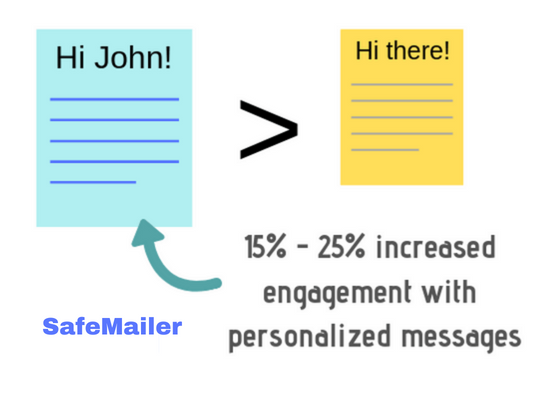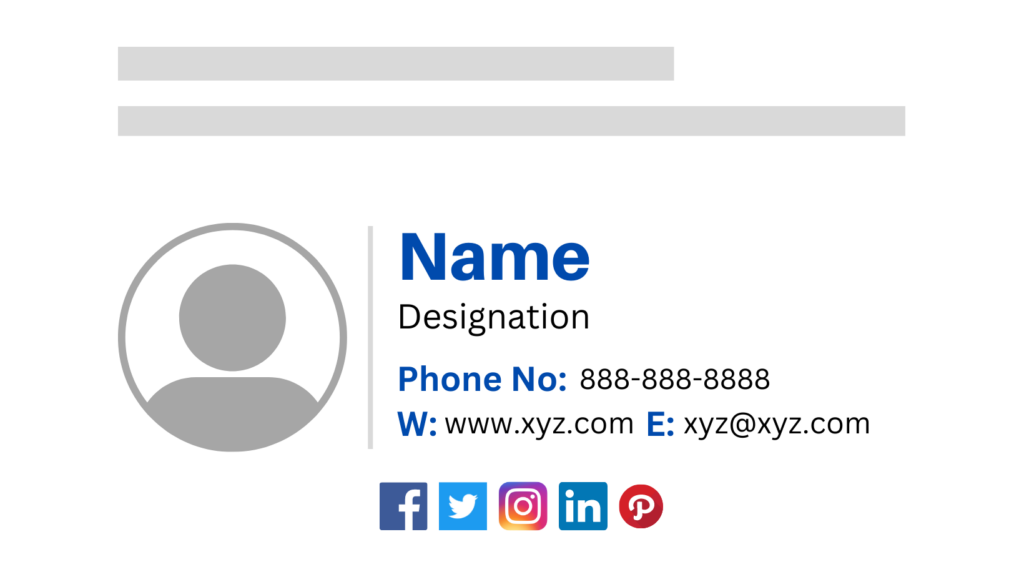Today, email marketing is one of the most important communication tools we have. And, when it comes to reaching out to new prospects or potential clients, there is no competition to cold emailing.
But, crafting an effective cold email can be a challenge.
Have you ever thought about:
How will you grab the recipient’s attention?
How will you avoid coming across as spammy or annoying?
And, most importantly, how will you get the response you’re looking for?
Don’t worry, this will cold email guide will cover everything you need to know to run a cold email marketing campaign successfully.
Here, we’ll tell you how to craft effective cold emails. We’ll cover everything from writing attention-grabbing subject lines to personalizing your message and following up after you’ve sent your email.
So, let’s dive in.
How to craft an effective cold email?
1. Attention-Grabbing Subject Line:
33% of email recipients decide whether to open an email based on the subject line alone shows a study from SuperOffice.
So, even if you’ve got an amazing email campaign with top-notch content, it’s not going to do you much good if your customers don’t even bother to open your emails.
Hence, nearly 47% of the marketers out there actually test different subject lines for their cold emails to try and boost their email performance.
After all, it’s the very first thing your email recipients see and forms their very first impression of you and your company.
So, even though your subject line might seem like a small part of your message, it’s actually super important!
Hence, make sure to craft a subject line that really grabs your recipients’ attention. After all, you don’t get a second chance to make a first impression, right?
2. Personalize Cold Email Content:
It’s not enough to simply address your email to the right person – you need to make an effort to show that you’ve done your homework and that you genuinely care about connecting with them.
Personalization can help you here.
Personalizing your cold email content can in fact be the difference between your message getting ignored or actually grabbing your recipient’s attention. You can in fact drive up to 15-25% more engagement with personalized messages.

But how do you personalize your cold email content? Well, an effective way is to use your recipient’s name – it’s a small gesture that can go a long way in making your email feel more personalized.
You can also do some research on their company and reference something specific that you admire or find interesting about their business.
However, the bottom line is to make your recipients feel you care about them.
3. Establish Authority:
When it comes to sending cold emails, establishing your credibility is a critical step in gaining your recipient’s trust and increasing the chances of a positive response.
After all, if someone doesn’t know anything about your business or who you are, they would be hesitant to engage with your message.
Hence, establishing your credibility in a cold email is crucial.
But how? One effective strategy is to include a brief overview of your experience, qualifications, or successes in your field.
This can help to demonstrate that you know what you’re talking about and that you have the expertise to provide value to your recipient.
For example, let’s say you’re a freelance content writer reaching out to a potential client for the first time. You could start your email by briefly introducing yourself and mentioning some of your relevant experiences with your work samples.
4. Alleviate Pain:
No one can ignore an email that has a solution to their problems.
By addressing the problems or challenges that your recipients’ are likely facing, you can demonstrate that you understand their needs and are offering a solution that can help.
But how do you know their problem? Well, one of the best ways to identify your recipient’s pain points is to conduct thorough research before sending your email.
Look into their business or industry and try to identify common challenges that they might be facing. For example, if you’re reaching out to a marketing manager, you might discover that their pain points include difficulty measuring ROI or struggling to create engaging content.
Once you’ve identified their pain points, you can tailor your email to address these specific challenges. Start by acknowledging the difficulties that they’re facing then explain how your product or service can help them to alleviate their pain points.
5. Highlight USPs:
When crafting a cold email, it’s essential to clearly specify what you’re offering and how it can benefit your recipient.
This helps your email stand out and shows that you’re not just sending a generic message, but have taken the time to understand their needs and are offering a valuable solution.
To do this effectively, explain how your offering can benefit your recipient. This could be in terms of cost savings, increased revenue, improved efficiency, enhanced customer satisfaction, or whatever your USP is.
Just be specific and provide concrete examples of how your offering has helped other businesses in similar situations.
6. Clear Call-to-Action:
A clear and concise call to action is essential to guide your recipient on what to do next. You can increase the likelihood of a positive response and move closer to achieving your goals with a compelling call to action.
To create an effective CTA, it’s important to be clear and concise. Use action-oriented language and make it easy for your recipient to follow through.
For example, instead of saying “let me know if you’re interested,” say “reply to this email to schedule a call.” Use a strong verb like “schedule,” “reserve,” or “book” to encourage action.
You can also add urgency to your CTA by including a deadline or time constraint. For example, you could say “reserve your spot today” or “limited slots available, book now.”
Lastly, it’s important to provide clear instructions on what to do next. If you’re requesting a call or meeting, provide a few options for dates and times. If you’re inviting them to visit your website, provide a direct link to the relevant page.
7. Well-Constructed Signature:
Your email signature is a valuable opportunity to provide important information about yourself and your business to your recipient. It should include all the relevant details that your recipient might need to contact you or learn more about your business.
Include a phone number, email address, and website link so that your recipient can easily get in touch with you. You may also want to include links to your social media profiles to give them more ways to connect with you. Here is the best example of a well-constructed email signature.

Just make sure to keep your signature simple and easy to read, using a professional font and avoiding too many graphics or images.
It should be visually appealing but not overwhelming, and should not take up too much space in your email.
Conclusion:
In conclusion, crafting a cold email that gets results can be a challenging but rewarding process. By following the guidelines outlined in this guide, you can increase the likelihood of getting a response from your recipient.
Remember to be respectful, polite, and professional in your communication, and to always follow up appropriately.
We hope with the help of this cold email guide, you can effectively leverage cold emailing as a powerful tool for business and professional networking.

Leave a Reply